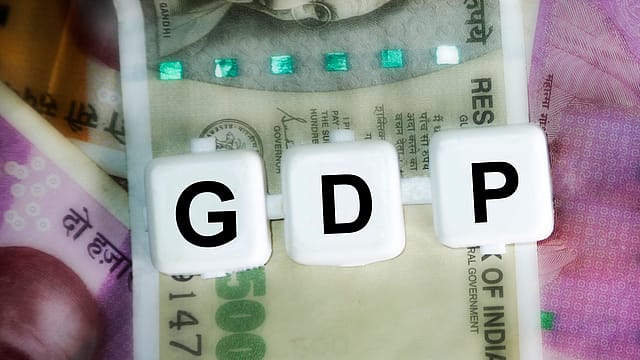Three Cheers for continuity, creativity and constructive intent
ADVERTISEMENT

The first full-year budget of the Modi 3.0 regime is a decisive response to the economic challenges of early 2025. With global uncertainties looming—threats of trade wars, high inflation, and geopolitical tensions still existing, the Finance Minister, Nirmala Sitharaman, has delivered a budget that balances fiscal prudence with bold stimulus measures. The announcement is poised to have far-reaching effects on growth, employment, and sectoral development, positioning India firmly on the path to becoming a developed nation by 2047.
At a time when GDP growth is slowing, the government has chosen to boost consumption by focusing on the middle class—both as an engine of growth and as beneficiaries of relief measures. The overhaul of personal income tax slabs ensures that individuals earning up to ₹12 lakh (₹12.75 lakh for the salaried class) are exempt from taxes. This move injects higher disposable income into the economy, increasing consumption and stimulating demand across multiple industries while reducing the risk of default on consumer loans.
However, these tax cuts are implemented without derailing fiscal discipline. The fiscal deficit has been brought down to 4.8% of GDP from the COVID-era peak of 9.2%, with a target of 4.4% in FY26. The government is betting on growth-driven revenue generation, estimating an 11% rise in gross tax revenue for FY26. While this is an ambitious gamble, if successful, it will strengthen fiscal sustainability while driving economic expansion.
January 2026
Netflix, which has been in India for a decade, has successfully struck a balance between high-class premium content and pricing that attracts a range of customers. Find out how the U.S. streaming giant evolved in India, plus an exclusive interview with CEO Ted Sarandos. Also read about the Best Investments for 2026, and how rising growth and easing inflation will come in handy for finance minister Nirmala Sitharaman as she prepares Budget 2026.
Infrastructure development remains at the core of India’s growth agenda, with ₹1.5 trillion allocated to projects aimed at enhancing connectivity and efficiency. A key move is opening PM Gati Shakti data to private players, fostering collaboration in logistics and transportation, reducing bottlenecks, and improving overall supply chain efficiency. Additionally, the government has announced a ₹25,000 crore Maritime Development Fund, a step toward making India a global shipbuilding powerhouse. This initiative is crucial in boosting domestic manufacturing, much like the transformation witnessed in the automobile sector over the last few decades.
Investments in port-led growth and enhanced logistics infrastructure will generate employment and enable Indian manufacturers to compete on the global stage.
The National Manufacturing Mission further strengthens India’s industrial base. With dedicated support for MSMEs through easy-term loans up to ₹20 crore and an Export Promotion Mission, the budget aims to enhance the global competitiveness of Indian enterprises. Streamlining access to credit and reducing non-tariff barriers will provide much-needed relief to small businesses struggling with cash flow constraints and international trade hurdles.
Given the unpredictability of global markets, the budget prioritizes domestic engines of growth—agriculture, MSMEs, investment, and exports. The introduction of the Pradhan Mantri Dhan Dhanya Krishi Yojana echoes the success of the Aspirational Districts Programme, aiming to strengthen agricultural productivity, crop diversification, and sustainable farming. Enhanced post-harvest storage facilities and seamless access to credit will provide stability to over 1.7 crore farmers, ensuring a resilient rural economy. Similarly, targeted support for high-potential industries like leather and toys—where India has a strong but underutilised manufacturing base—demonstrates a strategic vision. The government aims to make India a global hub for toy manufacturing, leveraging international trade dynamics such as potential tariff barriers on Chinese exports to the US. If executed well, this initiative could create up to 22 lakh jobs and significantly boost export revenue.
One of the most forward-looking aspects of the budget is its emphasis on clean technology. The government’s vision is to establish India as a leader in clean tech manufacturing, focusing on solar PV cells, EV batteries, wind turbines, high-voltage transmission equipment, and grid-scale batteries. This aligns with India’s goal of achieving net-zero emissions by 2070 and supports the global transition to sustainable energy solutions. Parallel to this, the budget makes provisions for AI and deep tech innovation, recognising their potential as key drivers of economic expansion. The integration of artificial intelligence into manufacturing, logistics, and service sectors will not only enhance efficiency but also position India as a technology leader in the years to come.
Despite the optimistic projections, there are inherent risks. The government estimates ₹1 lakh crore in tax revenue foregone due to income tax cuts, yet expects direct tax collections to rise by ₹3 lakh crore in FY26. This assumption hinges on a robust economic recovery, which, if delayed, could strain fiscal calculations. Nonetheless, the gamble on growth is a necessary and calculated risk, given the current economic landscape.
The Modi government’s latest budget strikes a fine balance between immediate stimulus and long-term economic resilience, VISION TOWARDS VIKSIT BHARAT. By prioritising infrastructure, clean tech, and manufacturing while maintaining fiscal discipline, it lays the groundwork for sustained growth. Although challenges remain—both domestic and global—the roadmap outlined in this budget provides a compelling vision for India’s economic future.
As businesses, investors, and policymakers navigate this transformative phase, the success of these initiatives will depend on effective execution and adaptability to evolving global dynamics. If managed well, India’s journey towards becoming a developed economy by 2047 appears well within reach.
Shashi Kiran Shetty is Founder and Chairman at Allcargo Group. Views are personal.
